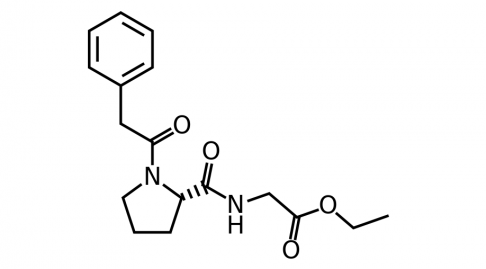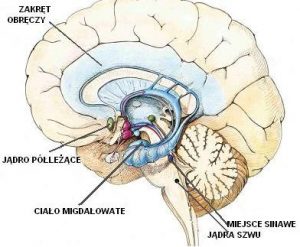Noopept and its effects on the brain


Last modified: 17-09-2021
Noopept is a substance sold as a nootropic drug, i.e. it improves the functioning of the central nervous system. We won’t find it in any pharmacy, but it is sold in some online stores. It is often purchased to improve cognitive functioning, including improving memory and concentration. What does science say about its effectiveness and what is my experience with this substance?
What is Noopept?
Noopept (another name: GVS-111) is a dipeptide, i.e. a chemical compound composed of two amino acids. It was synthesized at the Institute of Pharmacology of the Russian Academy of Medical Sciences. The goal was to create a substance that works similar to piracetam, but with better properties. Piracetam, in turn, is one of the first nootropic drugs. It is found in several prescription drugs (including Nootropil, Memotropil, Biotropil). The indications include, among others brain disorders related to old age, conditions after ischemic strokes, dizziness, supporting the therapy of dyslexic disorders in children. Noopept has not been registered in Poland yet.
In vitro studies on Noopept
Since the 1990s, research has been conducted on the effects of Noopept. Many of them were carried out in vitro, that is, outside the body. This is the normal early phase of drug research.
Studies have shown, inter alia, that Noopept can regulate the influx of calcium ions into neurons (Solntseva et al. 1997) and has a neuroprotective effect (Pelsman et al. 2003). It works by inhibiting the accumulation of free radicals and preventing damage to fats in nerve cells treated with hydrogen peroxide or iron (II) sulfate. Noopept has also been shown to have greater neuroprotective effects than piracetam and some antioxidants, such as vitamin E. In addition, it reduces the occurrence of degenerative changes in cells in people with Down’s syndrome.
It has also been shown (Ostrovskaya et al. 2008) that Noopept stimulates the expression of NGF (Nerve Growth Factor) and BDNF (Brain-Derived Neurotrophic Factor) in the hippocampus. They play an important role in cognitive functioning, and their levels are lowered in Alzheimer’s disease and in mild cognitive impairment that occurs before the disease progresses.
The studies by Kondratenko et al. (2010) showed that Noopept activates GABAergic inhibitory interneurons that reach pyramidal cells in the hippocampus. This may be responsible for the anxiolytic properties of Noopept.
Another study (Ostrovskaya et al. 2014) investigated the effect of Noopept on cells treated with the amyloid-beta peptide, which plays an important role in Alzheimer’s disease. The results indicated that cells given Noopept prior to amyloid-beta administration showed reduced mortality. Noopept inhibited the increase in calcium ions and prevented the effects of reactive oxygen species, which prevented the apoptosis (death) of many cells. In addition, Noopept reduced the hyperphosphorylation of the tau protein, which also indicates that it may be beneficial in Alzheimer’s disease.
Animal studies on Noopept
So far, several animal studies have been conducted to test the effects of Noopept. One study (Ostrovskaya et al. 2007) was conducted in a mouse model of Alzheimer’s disease. It turned out that thanks to Noopept, mice began regaining spatial memory. The immune response against the amyloid-beta peptide was also increased. At the same time, it was observed that Noopept had no effect on learning in healthy mice. This indicates that Noopept, like other nootropics, is beneficial for memory deficits, but has no benefit in the absence of memory impairment.
Human studies on Noopept
Not much human research has been done so far, but first evidence suggests that Noopept may be of benefit in people with disorders of the central nervous system.
One study (Neznamow and Teleshova 2009) compared the effectiveness of Noopept to piracetam. The study participants were 53 people with mild psycho-organic disorders resulting from a stroke or brain injury. Some of these people suffered from organic emotionally labile (asthenic) disorder, characterized by mood swings, fatigue, and somatic symptoms such as headaches and dizziness. Others have been diagnosed with post-concussion syndrome, which symptoms include headache and dizziness, fatigue, tendency to irritation, susceptibility to stress, problems with concentration and performance of mental tasks, memory impairment, insomnia.
The treatment lasted 56 days, with some people taking 20 mg a day of Noopept and some 1,200 mg a day of piracetam. In the course of the study, 4 people taking Noopept and 8 people taking piracetam dropped out of treatment, most often due to side effects or no effects.
Noopept has been shown to be highly effective. In people with organic emotionally labile disorder of stroke origin, the first effects were visible already in the first week of therapy, when their irritation tendency decreased and sleep improved. In patients with post-concussion syndrome, effects such as a reduction in emotional lability, anxiety, and weakness were also observed, although in them it happened later, in the 3-4th week. Noopept had no effect on sleep disorders in people with concussion. From the third week of therapy, improvement in attention and memory could be noticed in the study participants.
Compared to piracetam, Noopept turned out to be better in treating neurotic symptoms and comparably effective in improving cognitive functioning (memory, concentration). At the same time, Noopept caused fewer and less bothersome side effects (these included sleep disturbances, a tendency to irritation and an increase in blood pressure).
Efficacy of Noopept in healthy people
Research to date indicates that Noopept may benefit people with brain disorders such as neurodegenerative diseases, stroke and injury conditions. More clinical trials are needed for this substance to be approved as a drug, but so far the results are promising.
Does this mean that Noopept can improve functioning also in healthy people who want to perform better at school or work? Such conclusions cannot be drawn. So far, no studies have been conducted on the effectiveness of Noopept in healthy people, and the fact that it reduces brain disorders does not mean it will improve function if the disorders are not present.
People who decide to take Noopept in order to increase their performance at work or school should therefore be aware that they are experimenting on themselves and it is not known if and what results it will bring. I, thanks to the Allchemy online store, had the opportunity to test the Noopept Neurofluid product. It is a Noopept solution with ingredients to improve its taste and a dropper that allows it to be used sublingually. Thanks to this, it is better absorbed than taken in tablets.
How is my impression? Not the best. After the second dose on the first day, I started to have headaches and increased tinnitus, which I have had for as long as I can remember, but it does not bother me on a daily basis. After Noopept, it got so bad that it was irritating to me. Fortunately, they quickly weakened to their initial state after 2-3 hours, but at night there were other problems, this time with sleep. In the following days, I decided to take only one dose (the manufacturer recommends up to three a day). Even so, I still had serious sleep disorders – I woke up in the middle of the night and couldn’t sleep, so I stopped taking Noopept after a week. I have not noticed any positive effects of this product, but it is not surprising that my concentration or memory did not improve as I was sleepy every day. However, I must point out that due to sleep disorders, I have been taking trazodone – an antidepressant from the SARI group in small doses for many months. It is possible that it interacted with Noopept, although I tried to avoid it and took one medication 12 hours apart.
In any case, if you decide to buy Noopept to do better at school or work, take into account that no research has been done to see if this effect may occur (unless you have central nervous system disorders). Noopept can also have some side effects or interact with other medications.
References:
- Kondratenko R., Derevyagin V., Skrebitsky V. (2010). Novel nootropic dipeptide Noopept increases inhibitory synaptic transmission in CA1 pyramidal cells. Neuroscience Letters, 476,, 70-73. (pdf at www.mind-difference.info)
- Neznamov G., Teleshova E. (2009). Comparative Studies of Noopept and Piracetam in the Treatment of Patients with Mild Cognitive Disorders in Organic Brain Diseases of Vascular and Traumatic Origin. Neuroscience and Behavioral Physiology, 39(3), 311-321. (pdf at www.mind-difference.info)
- Ostrovskaya R., Gruden M., Bobkova N., Sewell R., Gudasheva T. i in. (2007). The nootropic and neuroprotective proline-containing dipeptide noopept restores spatial memory and increases immunoreactivity to amyloid in an Alzheimer’s disease model. Journal od Psychofarmacology, 21(6), 611-619. (pdf at www.mind-difference.info)
- Ostrovskaya R., Gudasheva T., Zaplina A., Vahitova Ju., Salimgareeva M. i in. (2008). Noopept Stimulates the Expression of NGF and BDNF in Rat Hippocampus. Bulletin of Experimental Biology and Medicine, 146(3), 334-337.
- Ostrovskaya R., Vakhitova Y., Kuzmina U., Salimgareeva M., Zainulina L. i in. (2014). Neuroprotective effect of novel cognitive enhancer noopept on AD-related cellular model involves the attenuation of apoptosis and tau hyperphosphorylation. Journal of Biomedical Science, 21(74), 1-9. (pdf at www.biomedcentral.com)
- Pelsman A., Hoyo-Vadillo C., Gudasheva T., Seredenin T., Ostrovskaya R. i in. (2003). GVS-111 prevents oxidative damage and apoptosis in normal and Down’s syndrome human cortical neurons. International Journal of Developmental Neuroscience,, 117-124. (pdf at lipos-c.com)
- Solntseva E., Bukanova J., Ostrovskaya R., Gudasheva T., Voronina T. i in. (1997). The Effects of Piracetam and Its Novel Peptide Analogue GVS-111 on Neuronal Voltage-Gated Calcium and Potassium Channels. General Pharmacology, 29(1), 85-89. (pdf at www.mind-difference.info)
Author: Maja Kochanowska






Add comment